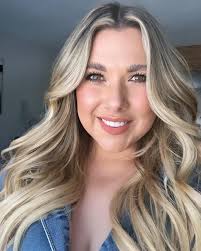Do K-Tip Extensions Damage Hair? Salon Owner's Reality
Look, I get this question every single day. A client sits in my salon, excited about k tip extensions but worried they'll wreck their natural hair. And honestly? I don't blame them. There's a lot of horror stories out there about hair extension damage.
But here's the thing - after installing thousands of k tip extensions over the past decade, I can tell you that when done right, they're actually one of the gentlest extension methods available. The problem isn't the extensions themselves. It's everything else that goes wrong with the application process.
What Exactly Are K-Tip Extensions and How Does the Keratin Bond Work?
K tip extensions are individual hair strands with a small keratin bond "tip" that looks like the letter K. That bond gets heated up using a specialized iron and wrapped around small strands of your natural hair. Once it cools down, it forms this strong but flexible attachment that holds everything in place.
The whole application process is pretty straightforward, but extensions involves precise technique and the right training. Each extension strand gets attached to maybe 15-20 of your natural strands of hair - not more.
For salon professionals looking to master this technique, our Ultimate K-Tip Mastery Class provides hands-on training with proper installation methods.
The keratin bond is made from the same protein that's already in hair to your natural structure, so it's naturally compatible and helps add length and volume without compromising your natural look.
What I love about this hair enhancement method is how it creates a natural appearance. Clients can run their fingers through their hair, put it in ponytails, even braid it. The bonds are virtually invisible when extensions are applied correctly, and they blend seamlessly with your natural hair.
Here's the Truth: Do K-Tip Extensions Actually Cause Hair Damage?
I'm going to be straight with you - k tip extensions don't damage healthy hair when they're installed properly by a trained stylist. But that's a big "when," and the risk of damage depends entirely on the installation quality.
I've seen plenty of hair extension damage over the years, and it's almost always because someone cut corners. Maybe they used synthetic materials instead of human hair, skipped proper training, or rushed through the installation. The extensions themselves aren't the villain here - it's poor technique that can weaken your natural hair.
Think about it this way: each keratin bond distributes the weight across multiple hair strands. When you spread that weight out properly, there's way less stress on any individual strand, reducing the risk of breakage. But extensions may cause problems if sections are too large or bonds are placed incorrectly.
The key factors that keep your hair safe? Using the right temperature with your iron, taking appropriately sized sections based on your hair type, and working with high-quality extensions. When everything's applied correctly, I've had clients wear k tip extensions for months without any damage - their natural hair grows out healthy underneath.
Which Hair Types Work Best with K-Tip Extensions?
Not everyone's a good candidate for k tip extensions, and any honest stylist will tell you that upfront during consultation. Over the years, I've learned to select clients who'll have great results and when to opt for different types of extensions.
Medium to thick hair is absolutely perfect for k-tips. There's enough natural hair to support the extra weight and length, and the bonds hold really well. If you've got healthy, undamaged hair, even better - you can withstand various styling options without worry.
Straight to slightly wavy hair works beautifully too. The smoother texture lets everything blend seamlessly, and the bonds don't have to fight against a lot of natural curl or texture that might stress the attachment points.
Now, thin hair - that's where I get more careful. It doesn't mean you can't have k tip extensions, but we need to modify our approach. Smaller sections, fewer extensions in each area, maybe choosing lightweight options. Extensions come in different weights, so we can customize the approach.
The hair types I typically avoid? Severely damaged or chemically over-processed hair just can't handle any kind of hair extension safely. Sometimes experts recommend focusing on getting the natural hair healthy first before we add length and volume.
Professional K-Tip Extensions Installation: A Process That Requires Real Skill
Every installation starts with me really looking at someone's hair type. What's the texture like? How thick is it? What's the overall health and density? This meticulous process determines how many extensions we can safely add and exactly where they should go.
The sectioning is where a lot of people mess up. Take too much natural hair using poor technique, and you're overloading that section. Take too little, and the bond won't hold properly.
There's a sweet spot that requires precision and the right tools and techniques to get right.
Then there's the heating process using a specialized iron. Those professional tools maintain consistent temperatures, which is crucial for proper installation. The temperature control lets us fuse the keratin without causing breakage. When you consult with a stylist who knows what they're doing, you can work efficiently without compromising quality.
The right tools make all the difference. We use professional-grade equipment like our Hot Fusion Tool (K-tip Iron) for precise temperature control during installation.
The Safe Removal Process: Protecting Your Natural Hair
Here's where a lot of hair extension damage actually happens - during removal. I cannot tell you how many people I've seen try to pick these things out themselves or go to someone who doesn't know the proper removal techniques.
Proper removal starts with the right solution. We apply this special remover that breaks down the keratin bond without damaging your natural hair. It takes about 10-15 minutes to work, depending on how strong the bonds are and your hair type.
For safe removal, always use professional-grade products like our Keratin Bond Hair Extension Remover designed specifically for K-tip extensions.
Once everything's softened up, the extensions should slide out pretty easily with the right approach. No pulling, no yanking, no aggressive brushing. After removal, your hair needs a quality conditioner treatment to restore moisture and make sure there's no residual bond material left behind.
Washing Your Hair with K-Tip Extensions
The aftercare conversation is huge, and washing technique is probably where I see the most confusion. People think they need to baby their hair so much that they barely clean it, or they go the opposite direction and scrub like they're trying to remove paint.
Here's what actually works: washing your hair 2-3 times per week, max. Your natural oils are your friend here. On non-wash days, dry shampoo works great and won't interfere with the attachment points.
When you do wash, focus on your scalp and close to the root area. Let the shampoo run down the length instead of scrubbing the bonds directly. Use sulfate-free products - harsh detergents will break down those keratin bonds faster than anything.
Avoid heavy oils near the bonds, and skip products with too much silicone as they can build up and weaken the attachment. A good conditioner on the mid-lengths and ends keeps everything healthy.
The brushing part is crucial too and will prevent tangling and matting. Start from the bottom and work your way up, using a brush designed for extensions. Never brush wet hair with extensions - that's asking for trouble. Hair without proper brushing care will shed and look unnatural quickly.
How K-Tip Extensions Stack Up Against Other Hair Extension Methods: Durability and Versatility
Every hair extension method has its place, and k tip extensions aren't always the right answer depending on your lifestyle. But they do have significant advantages when compared to other types of extensions, especially in terms of long-lasting results.
Compared to tape-ins, k tip extensions typically last way longer. Tape-ins need maintenance every 6-8 weeks, while k-tips can go 3-4 months easy. Plus, you can style k-tips however you want - high ponytails, braids, including curling and other heat styling. The versatility is incredible compared to weft-based methods.
If you're considering other extension methods, explore our Hand-Tied Wefts for fine hair or Genius Wefts for maximum versatility.
Traditional sew-in methods put a lot of tension on your hairline and can be uncomfortable on your scalp. K tip extensions distribute weight so much more evenly. I have clients who forget they're even wearing extensions.
The durability really comes down to three things: quality installation, good materials, and consistent aftercare. Get all three right, depending on how well you maintain them, you're looking at months of gorgeous styling options that may even last longer than expected.
How Long Do K-Tip Extensions Last?
One of the biggest questions I get from clients is about longevity - and honestly, it's a fair concern when you're investing in quality extensions.
K tip extensions typically last 3-4 months with proper care and maintenance. But here's the thing - that timeline isn't set in stone. I've had clients who've stretched theirs to 5 months, and others who needed adjustments at 2.5 months. It all depends on a few key factors.
What affects how long your K-tips last?
Your natural hair growth rate plays a huge role. As your hair grows, those bonds move further from your scalp, which can make them more visible and prone to tangling. Most people's hair grows about half an inch per month, so after 3-4 months, there's enough new growth that the extensions need attention.
Your lifestyle matters too. If you're washing your hair daily, using lots of styling products, or you're super active with swimming or frequent ponytails, your extensions may not last as long. This is why I always stress that aftercare isn't optional - it directly impacts your investment.
The quality of installation makes a massive difference as well. When bonds are placed correctly with the right section sizes and proper temperature, they hold strong for the full wear period. But if shortcuts were taken during installation, you might see slipping or breakage much sooner.
Signs it's time for maintenance:
- Bonds have grown out 1-2 inches from your scalp
- You notice more tangling than usual
- Extensions feel loose or start slipping
- Your natural hair growth is creating an obvious line
Most of my clients book their maintenance appointments every 6-8 weeks for a check-up, then full removal and reinstall at the 3-4 month mark. This keeps everything looking fresh and prevents any damage from overwearing.
Taking Care of Your K-Tip Extensions Long-Term
Successful k tip extensions aren't just about the installation - they're about what happens after you leave my chair. I always tell clients that the first 48 hours are crucial. Don't wash your hair, don't go crazy with styling tools, just let those bonds set properly. Think of it like letting concrete cure.
After that initial period, your daily routine becomes really important. I recommend brushing twice a day with a soft-bristle brush designed for extensions. Start at the ends and work your way up - never go straight from root to tip or you'll create tangles that stress the bonds. This also helps distribute your natural oils, which keeps everything looking healthy.
Heat styling is totally fine, but always use a heat protectant. I've seen too many people skip this step and wonder why their extensions feel dry and brittle after a few weeks. And here's something most people don't think about - you might need to trim the extensions occasionally as your natural hair grows. It helps maintain that seamless blend.
I usually schedule follow-up appointments every 6-8 weeks. This isn't just a money grab - it's when I can catch small issues before they become big problems and give your hair some extra conditioning love.
The Mistakes I See Over and Over Again
Most of the k tip extension horror stories I hear about come down to the same few mistakes, and honestly, they're all preventable.
The biggest one? Taking sections that are way too big. I get it - it's faster to work with larger pieces, but overloading sections is the fastest way to cause damage and discomfort to your scalp. There's no shortcut here, and proper installation requires patience.
Then there's the temperature thing. Some people blast the heat thinking it'll make stronger bonds. Others barely warm the keratin and wonder why everything slides out in a week. You need professional tools with precise temperature control - there's a sweet spot, and it takes experience to find it consistently.
Quality issues are huge too. Cheap extensions and low-grade keratin bonds might save money upfront, but they'll cost you in long-term hair health. Poor-quality materials tangle, break down faster, and can actually damage natural hair. I've seen people spend more money fixing bad extensions than they would have spent getting quality ones in the first place.
And honestly? A lot of damage happens because clients don't get proper education about home care. If someone doesn't know how to brush correctly, what conditioner to use, or what products to avoid, even perfect installation won't save them from problems down the road.
The Bottom Line on K-Tip Extension Safety
After doing this for over a decade, here's what I know for sure: k tip extensions are safe when you do everything right. That means proper installation by a trained stylist, high-quality materials, and thorough aftercare education.
The extensions themselves aren't the problem - it's everything around the application process that determines whether you'll have a great experience. Choose your stylist carefully, invest in quality, and follow the aftercare instructions religiously.
When extensions are applied correctly using high-quality materials, they can be completely transformative without compromising the health of what you were born with. That's the goal we should all be working toward.
Ready to Experience Safe, Professional K-Tip Extensions?
Don't risk your hair's health with subpar extensions or inexperienced stylists. At Christian Michael Hair Extensions, we provide salon professionals with the highest quality K-Tip Hair Extensions and comprehensive training to ensure perfect results every time.
For Salon Professionals:
- Browse our complete K-Tip Extensions Collection featuring premium human hair
- Master the technique with our Ultimate K-Tip Mastery Class
- Get professional tools and removal products for safe installations
For Clients: Ready to transform your hair safely? Find a certified stylist in your area who uses Christian Michael Hair Extensions and follows proper installation protocols.
Your hair deserves the best. Choose quality, choose safety, choose Christian Michael Hair Extensions.
What You Need to Remember
After doing this for over a decade, here's what I know for sure: k tip extensions are safe when you do everything right. That means proper installation by a trained stylist, high-quality materials, and thorough aftercare education.
Find a stylist who actually knows the application process - this isn't the time to experiment with someone new to k tip extensions. Quality matters more than price, because cheap materials will cause problems that cost way more to fix than you saved upfront.
Not every hair type is suitable for k-tips, so get an honest consultation before committing. Aftercare isn't optional - proper washing techniques and regular brushing prevent damage and keep everything looking natural.
Regular maintenance catches problems before they become disasters. Professional removal is worth every penny - don't try to take these out yourself. When applied correctly, you can expect 3-4 months of beautiful, damage-free wear that will add length and volume to transform your look completely.

Tiffany Loe
Owner & Master Stylist
Hair extension expert and salon owner with a passion for helping stylists succeed. Tiffany has been transforming hair and building confidence for over 15 years.




